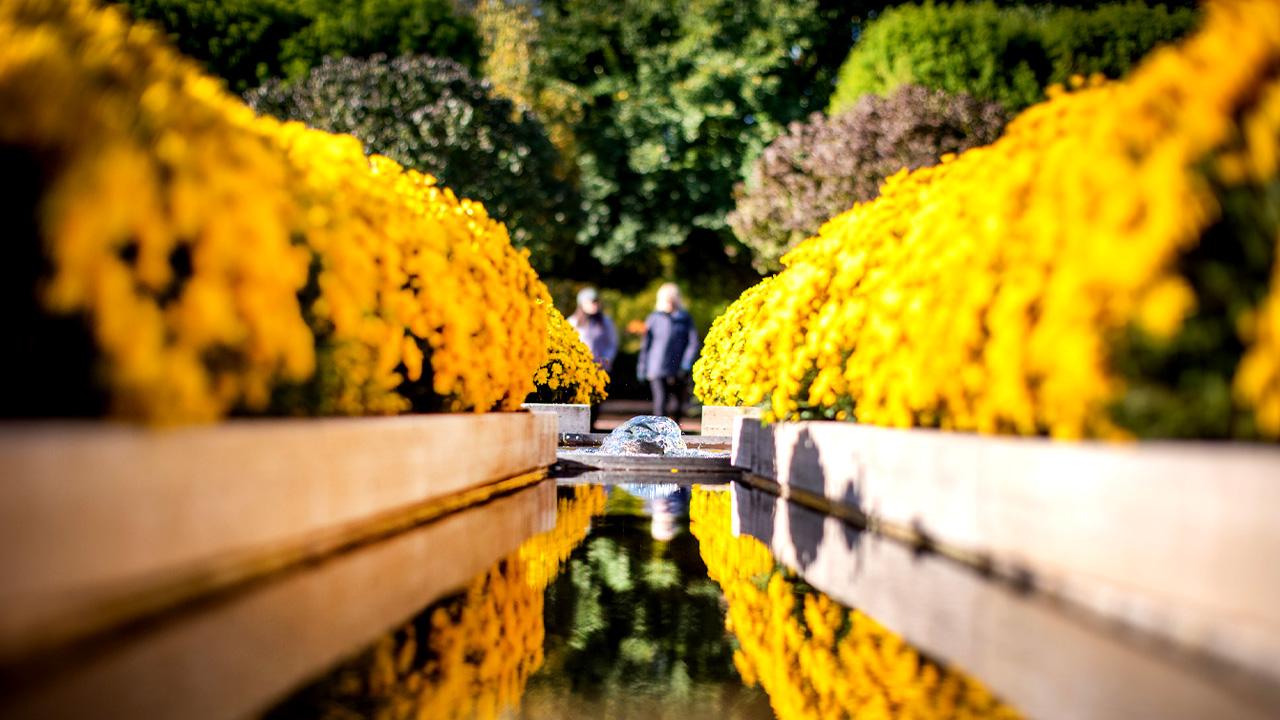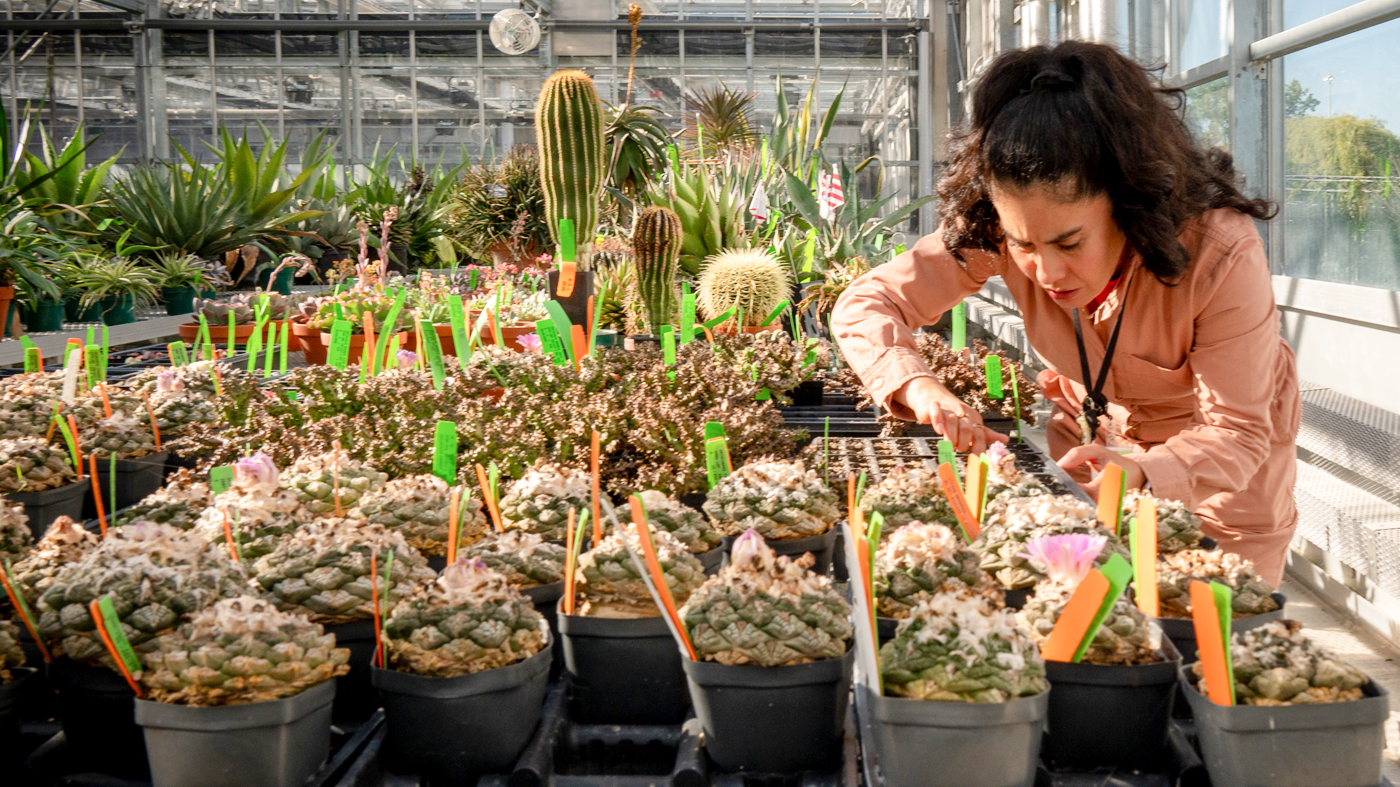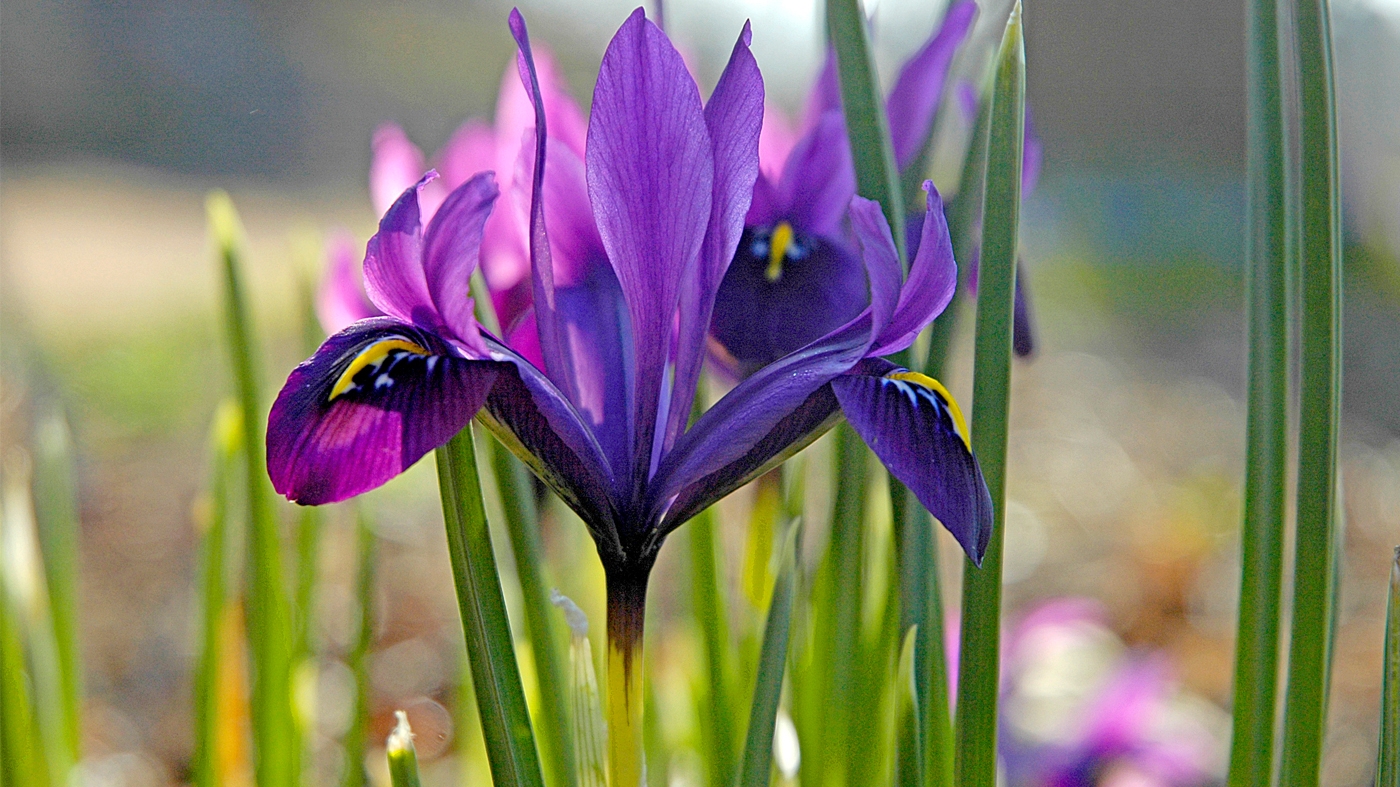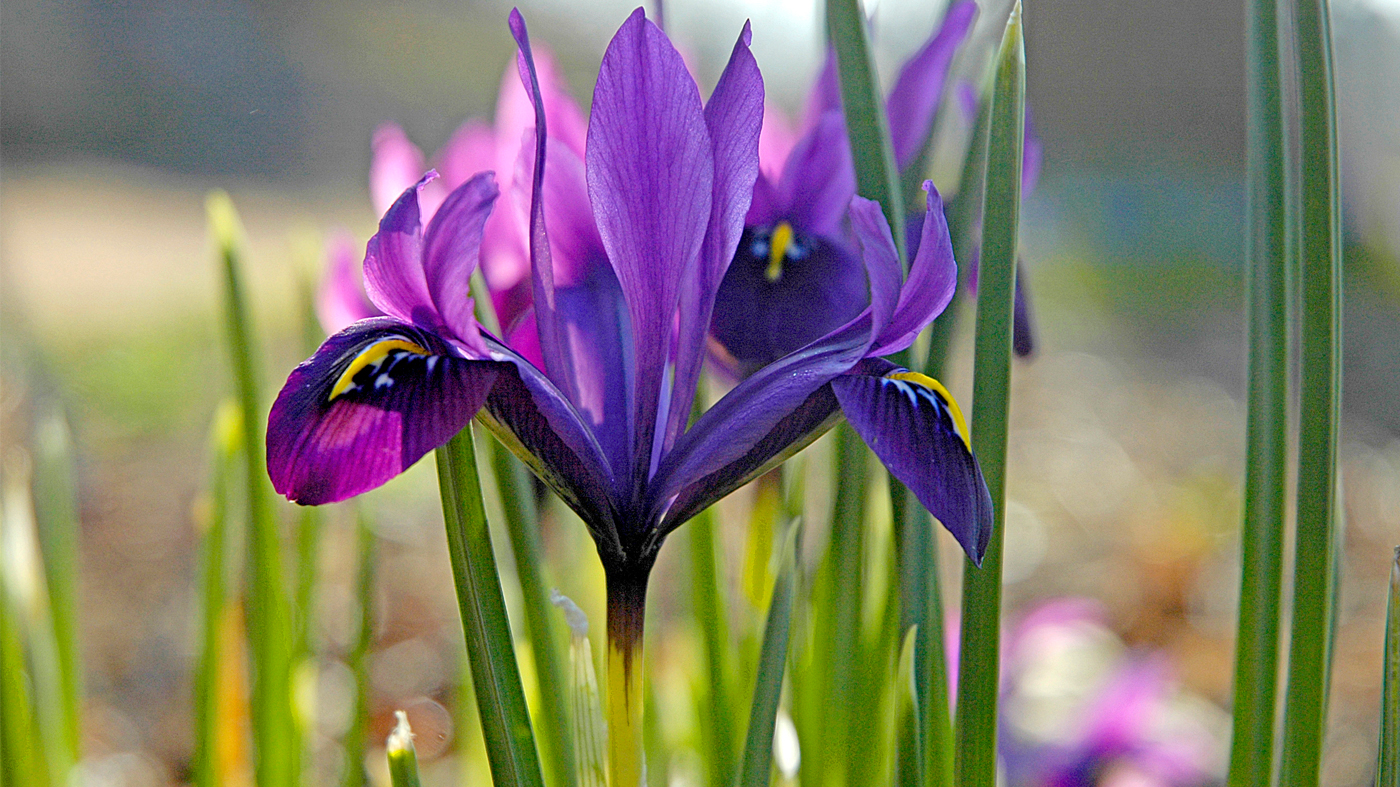

News
Garden Stories
Rescuing Plants from Poachers
Seized at O'Hare, Endangered Cacti Find New Life and a Step Toward Repatriation.
At the end of a greenhouse bench sit dozens of squat, thornless, gray-green cacti called Ariocarpus fissuratus. Native only to Mexico and southwestern Texas, they’ve been carefully tended by Chicago Botanic Garden horticulturists since 2019, after being seized by federal agents at O’Hare International Airport.
Sometimes called the living rock cactus, Ariocarpus fissuratus is prized by collectors who either don’t know or don’t care that the plant is critically endangered. To meet that demand, unscrupulous plant dealers pay local people to collect the cacti, then try to slip them past U.S. Customs to feed an international black market.
This illegal trade is so lucrative that nearly a third of the world’s cactus species are now endangered. Contraband orchids, succulents, and cycads also are frequently intercepted at U.S. airports. The confiscated plants are entrusted to plant rescue centers; the Garden is one of more than 90 centers nationwide.

Gabriela Rocha Alvarez with Ariocarpus plants
The largest of the Ariocarpus fissuratus housed in the Garden’s greenhouses are maybe 6 inches tall, just big enough to display in a modest pot on a sunny windowsill. Gabriela Rocha Alvarez, the Garden’s plant recorder, estimates they are 50 to 60 years old. Specimens this size can command hundreds or even thousands of dollars on the black market.
Enlisting often-impoverished locals to collect rare plants remains part of the poachers’ playbook, but the job is made easier today with the use of GPS and messaging tools. The gatherers are the bottom rung of a violent and lawless enterprise not unlike drug or gun smuggling or human sex trafficking.
As a living museum, the Garden welcomes rare specimens to its collection to display, to educate the public, and to preserve parts of dwindling populations. But fostering entire shipments of plants indefinitely is an inefficient use of resources. Typically, only one or two plants are on display, while dozens more are lovingly tended but never leave the greenhouse.
“People want to see things they wouldn’t see otherwise, but we don’t need to keep them all,” Rocha said.
In addition, the likelihood that these rare plants were taken from a country historically plundered by richer nations is ethically troubling, Rocha said. The countries most impacted by plant poaching are Mexico, Brazil, Indonesia, and South Africa.
The Garden has begun the process of repatriating the cacti to Mexico by partnering with the Desert Botanical Garden in Phoenix, which maintains a batch of Ariocarpus fissuratus from the same seized shipment, and Autonomous University of Querétaro, Mexico, which will take custody of them.

If this process is successful, Rocha hopes to replicate it whenever possible. Next up: a confiscated shipment accepted by the Garden last April, which contained nine species suspected to have been poached from South Africa and Mexico.
Eventually, Rocha envisions a broad international network of gardens, universities, and other institutions working with the U.S. rescue centers to repatriate recovered plants. The plants would be placed in accredited museums where they can be maintained and protected while also being viewed and appreciated by the public.
Ideally, of course, the plants would return to their homes in the wild. But with their populations in decline and their habitats often destroyed, that simply isn’t realistic today, Rocha said.
“I don’t think I’ll see that in my lifetime.”

